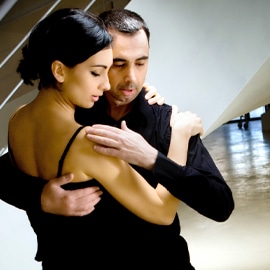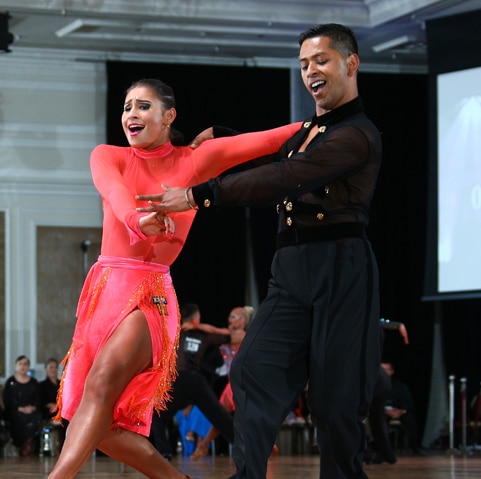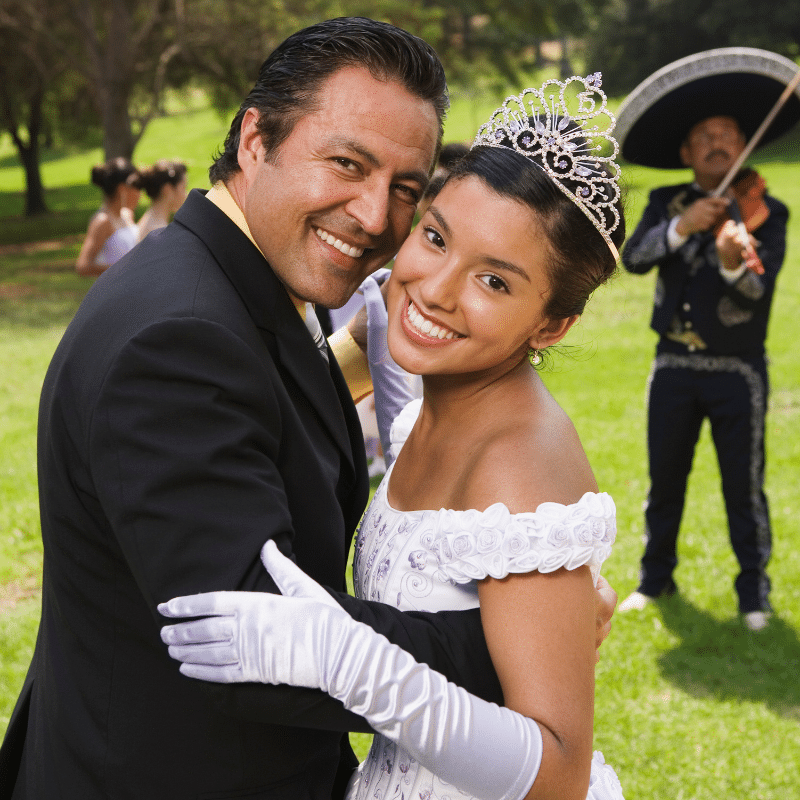10 Tips to Improve Your Ballroom Technique
Any ballroom dancer can tell you, there is no easy way to get amazing at any particular ballroom style in a short period of time. However, there are certainly best practices that smart dancers will use to ensure they get the most out of every moment spent practicing, performing, and thinking about ballroom dance! Here are some of the best tips and pieces of advice we’ve heard over the years to encourage and support your hard work.
- Practice regularly. Consistency is key when it comes to improving your ballroom dancing technique. Set aside time each day or at least a few times a week to practice your steps and moves.
- Take lessons from a professional. One of our qualified Fred Astaire dance instructors can help you learn proper technique, as well as provide feedback and guidance customized to your interests and needs. They can also help you identify and correct any bad habits you may have picked up by accident!
- Watch videos of professional dancers. Study the movement and technique of

- Focus on your posture. Good posture is essential for ballroom dancing. Keep your shoulders back, your head up, and your chest out. This will help you move with grace and control.
- Work on your footwork. Ballroom dancing is all about footwork, so make sure you are paying attention to your steps. Practice different types of footwork, such as chasses, runs, and turns.
- Practice with a partner. Dancing with a partner is different than dancing alone, so it’s important to practice with someone else. A partner can help you work on your timing, lead and follow, and other important skills.
- Work on your frame. The “frame” is the connection between you and your partner. It’s important to maintain a good frame in order to move smoothly and seamlessly together.
- Pay attention to your timing. Timing is crucial in ballroom dancing. Practice counting the beats of the music, and make sure your steps are in time with the music. Practice with a wide variety of tempos to ensure you are comfortable in both fast and slow routines!

- Have fun! Remember that ballroom dancing is a hobby, and it should be enjoyable. Try not to get too caught up in perfection and have fun with the process of learning and improving.
Overall, ballroom dancing is a skill that requires practice, patience, and dedication. By focusing on proper technique, footwork, and timing, and by taking lessons from a professional, you can improve your ballroom dancing abilities and enjoy this beautiful art form.
5 Things You Should Know About the Father-Daughter Dance
The father-daughter dance is a staple at many weddings. It’s the moment when the bride honors their father, and represents the love and gratitude they have for the father or father figure in their life. If you decide to include the father-daughter dance in your own wedding, you might not know where to begin. Read on for 5 things you should know about the dance.
A brief history of the father-daughter dance
Like many wedding traditions, the father-daughter dance comes from our patriarchal history and used to serve as a final demand by the bride’s father before the husband became the most important man in the bride’s life. Now the dance doesn’t hold the same meaning, and instead is more of a symbol of the father’s and daughter’s love for each other.
Frequently Asked Questions
When do you have the father-daughter dance?
Many brides decide to have the father-daughter dance directly after their first dance with their new spouse. But if you don’t want to have the dance after that moment, there are other good times to squeeze it in like after the toasts and before cutting the cake.
What song should you pick?
While some brides choose a heartfelt, loving song, other brides opt for a song that’s more upbeat and brings a little laughter to the guests. Ultimately it’s up to you. So whether you choose something fast or slow, it should reflect your relationship.
Should the dance be choreographed?
If you want to dance to a faster, upbeat song, choreographing a routine could be a fun and unexpected idea. But if you’d rather stay with a slower, traditional dance, it might not be necessary. Instead, you can take a couple of dance lessons instead to practice before the real thing.
Can you include your step-parents?
Tradition is one thing, but this dance is ultimately up to you! You have the freedom to choose whomever you want to dance with, and you can always switch partners (or songs) halfway through. If there are a couple of people you’d like to honor with the dance, they can all take turns cutting in to share the moment.
How long does the dance last?
A good rule of thumb is that the dance lasts for around 3-4 minutes, or as long as the song actually lasts. However there are some people who recommend playing a shortened version of the song rather than the full one to keep your guests’ attention.
At Fred Astaire Dance Studios, we can provide you and other people in your wedding party dance lessons to make your big day even more special. Whether you’re interested in a choreographed routine or just want a little practice before showtime, we’re here to help. Contact us today and find out more!
Did you know that dancing can help increase flexibility and give you relief from muscle aches? Keep your body in tip-top shape and ensure your ballroom dance skills flourish by starting a regular stretching routine.
Regular stretching can improve physical performance, decrease injury, improve joint movement and improve muscles, Mayo Clinic reports. When we do not stretch, the muscles shorten and become tight, hindering your ability to learn dance moves quickly. Stretching helps keep hips and hamstrings flexible as you age, according to WebMD. Experts agree, stretching directly before exercise is not as important as previously believed, but implementing a regular stretching routine is key for muscle health. Stretching each of the major muscle groups at least two times a week for 30 seconds per exercise is key to achieving success.
Learning to swing, salsa and tango at Fred Astaire Dance Studios is a low-impact aerobic workout that burns fat and boosts metabolism. In just 30 minutes of dance, you can burn between 200–400 calories. Every lesson at Fred Astaire Dance Studios begins with a few stretching exercises to help dancers execute dance steps with comfort and ease. Stretching helps improve flexibility and keeps muscles limber, decreasing the chance of suffering a dance-related injury. Implementing a regular stretching routine at home can help improve dance skills and decrease joint pain and muscle soreness after exercise.
Here are three stretches to make part of your routine. Make sure to hold each stretch for 30 seconds without bouncing to achieve the maximum effect.
Standing Hamstring Stretch – Stand up straight with feet together. Bend at the waist as far as you can without bending knees. Repeat.
Butterfly Stretch – Sit tall, press the soles of your feet together and drop your knees to the side.
Quad stretch – Stand up straight with feet together. Bend knee back and hold it up with your opposite hand to stretch quadriceps. Repeat with the other leg. We suggest using your opposite hand because dancers have found that using your opposite hand is less pull on the knee and avoids injury or stretching in the wrong direction.
Get Limber at Fred Astaire Dance Studios
Visit your local Fred Astaire Dance Studios location to improve flexibility by learning a proper routine and some ballroom dance moves.

